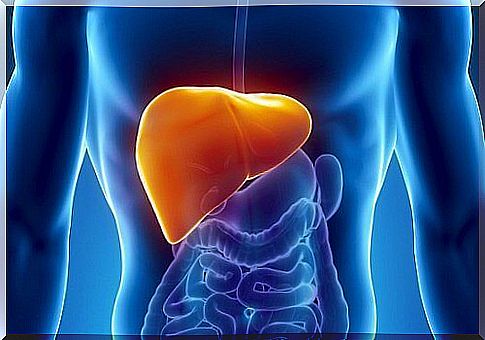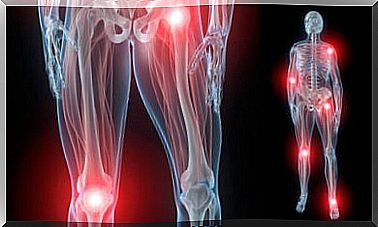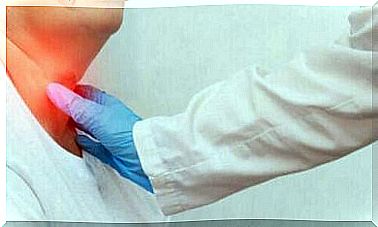Fatty Liver Syndrome: What Are The Symptoms?

An unhealthy lifestyle, overweight or an inadequate diet are undoubtedly factors that cause fatty liver syndrome.
Experts say it is one of the most common pathologies these days, yet it is a curable disease. Indeed, thanks to certain determined rules, we can eliminate this excess fat in the liver.
In this article, we are going to introduce you to the symptoms of fatty liver syndrome, so that you can spot them and take action as early as possible.
Remember that when you have any doubts or discomfort, it is important to consult your doctor. Your health must be your priority!
1. What is fatty liver syndrome?
In medicine, fatty liver syndrome is also known as “fatty liver”.
You should know that this is a mild disease. However, if it is not treated properly, it can cause more serious pain in the long term.
Thus, our liver stores fatty acids and triglycerides, which damage this vital organ for our body.
As a result, our liver becomes paralyzed. It can therefore no longer correctly perform its functions of metabolizing and purifying toxic substances.
You should also know that with excess fat in the liver, the liver suffers from constant small injuries that it tries to repair.
Scars will therefore appear. These are small, permanent lesions known as “cirrhosis”.
Doctors tell us that we usually have fat in the liver. When this fat exceeds 10%, we consider that we are already suffering from “fatty liver”.
The blood will therefore contain an excess of harmful foods that the liver will no longer be able to process properly.
What does fatty liver produce?
Many people immediately associate fatty liver with problems with alcohol or harmful lifestyle habits.
However, there are more factors that can lead to this disease. This is why it is worth mentioning them in continuation:
- Overweight or obesity problems
- Hereditary metabolic disorders
- From the age of 50, the risk of suffering from excess fat in the liver increases.
- The continued abuse of specific drugs such as anti-inflammatory drugs, pain relievers, aspirin, tamoxifen or even steroids.
- You should also be very careful with triglycerides. Failure to properly treat bad cholesterol can cause excess fat in the liver.
- Type 2 diabetes is also one of the causes to consider.
How do you know if you have fat in your liver?
There are many symptoms of fatty liver syndrome that can be confused with other conditions.
However, it is fundamental to suffer from a number of indicators for several weeks.
The moment you realize that you are no longer able to lead a normal life, it is necessary to consult a doctor.
Tiredness
Fatigue is one of the most visible indicators of people with fatty liver syndrome. This is also the case if they are suffering from excess fat in their liver cells.
Indeed, they have great difficulty getting up in the morning, waking up and finding strength to start the day. Exhaustion is also very pronounced right after meals.
Ill-being
When there is excess fat in the liver, it tends to become inflamed and increase.
The abdomen hurts and we notice a very characteristic discomfort under the ribs. It can radiate to the back area.
It is a pressure that can turn into a kind of “hot pain”, like a burning electric plate.
Lack of appetite
Fatty liver syndrome also causes general ill-being which causes us to lose our appetite.
Digestions become heavier and more painful. We end up losing weight in a very worrying and dangerous way.
The risk of cirrhosis
As previously reported, fatty liver syndrome causes a series of lesions and scarring, and this leads to cirrhosis.
If you don’t treat it, it ends up causing jaundice. The skin and our eyes will turn a yellowish color.
Another symptom to be aware of is swelling in our body, feet, legs, and face.
Our liver no longer synthesizes proteins adequately. This deficit will be compensated by the accumulation of liquids.

In conclusion, fatty liver syndrome is a risk to our health. This problem can lead to more serious problems if it is not treated properly.
Be aware of these symptoms and see a doctor as soon as possible.









